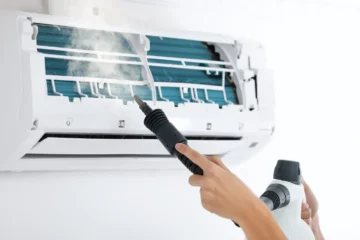Introduction: Why One Size Doesn’t Fit All
When the factory warranty ends, many drivers start thinking about extra protection. But not every extended car warranty is the same. Some focus on covering the most expensive parts of the car, while others aim to protect almost everything. Choosing the right one comes down to your car, your driving habits, and your budget.
Let’s break down the different types of extended car warranties, what they include, and when each option makes sense.
Powertrain Warranty
The most basic type of extended warranty is the powertrain warranty. This plan covers the parts that literally keep your car moving—the engine, transmission, and drive axles.
Why it matters: these are some of the most expensive repairs a car owner can face. Replacing a transmission can cost anywhere from $3,000 to $5,000 or more, depending on the vehicle. With a powertrain warranty, you’re protected from that kind of financial shock.
When it makes sense: if you drive an older car and want protection against catastrophic failures, but don’t want to pay for comprehensive coverage, this is a smart choice.
Bumper-to-Bumper Warranty
Sometimes called exclusionary coverage, a bumper-to-bumper warranty is the closest you’ll get to full protection. It covers almost every part of the vehicle, with only a short list of exclusions like tires, brake pads, wiper blades, and other wear-and-tear items.
Why it matters: modern vehicles are packed with electronics, sensors, and complex systems. Repairs on these components can add up quickly. With bumper-to-bumper coverage, you’re protected from a wide range of failures.
When it makes sense: if you rely heavily on your car, own a luxury or high-tech vehicle, or just want maximum peace of mind, this type of warranty is worth considering.
Stated Component Warranty
Also called a named component warranty, this plan lists exactly which parts and systems are covered. For example, it might cover your air conditioning system, certain electrical components, or steering, but exclude others.
Why it matters: you get to see exactly what’s protected, which removes some of the guesswork. It’s also usually less expensive than a bumper-to-bumper plan.
When it makes sense: if your car is known for issues in specific systems—or if you don’t need broad coverage but want protection for high-risk parts—this can be a cost-effective option.
Wrap Coverage
Wrap coverage is designed to “wrap around” an existing powertrain warranty. Many factory warranties already protect the powertrain for longer than other systems. A wrap plan fills the gaps by covering non-powertrain components, such as electronics, climate control, or suspension.
Why it matters: you don’t pay for duplicate coverage, but you still get added protection.
When it makes sense: if your car still has a factory powertrain warranty in place, but you want protection for everything else, a wrap plan is often the smartest choice.
Specialized Coverage Plans
Beyond the main types, some providers also offer specialized extended warranties. Examples include:
- High-tech or electronics coverage: Protects navigation systems, backup cameras, infotainment, and advanced safety features.
- Hybrid and electric vehicle coverage: Covers batteries, electric motors, and other unique components that traditional warranties may not include.
- Additional perks packages: These may add roadside assistance, rental car reimbursement, or trip interruption protection.
These extras can make a big difference depending on your vehicle type and lifestyle.
How to Choose the Right Type of Extended Car Warranty
With so many options, here’s a simple way to narrow it down:
- Know your car’s needs. Does it have a reputation for powertrain issues, electrical problems, or is it packed with technology?
- Think about how long you’ll keep it. Long-term ownership often justifies broader coverage.
- Balance cost vs risk. A bumper-to-bumper plan costs more, but it protects against more surprises. A powertrain plan costs less, but leaves you exposed to smaller repairs.
- Review what you already have. If your factory powertrain warranty is still active, a wrap plan or stated component plan may be all you need.
Conclusion: Match the Warranty to Your Driving Life
There’s no single “best” type of extended car warranty—it depends on you and your vehicle. If you’re mainly worried about big-ticket repairs, a powertrain plan might be enough. If you want broad protection, bumper-to-bumper gives you maximum coverage. For something in between, stated component or wrap coverage may be the perfect fit.
The key is to choose a plan that matches your car’s risk factors and your tolerance for repair costs. With the right extended warranty in place, you can drive with confidence knowing you’re protected from the unexpected.
Keep an eye for more latest news & updates on Gossips!




